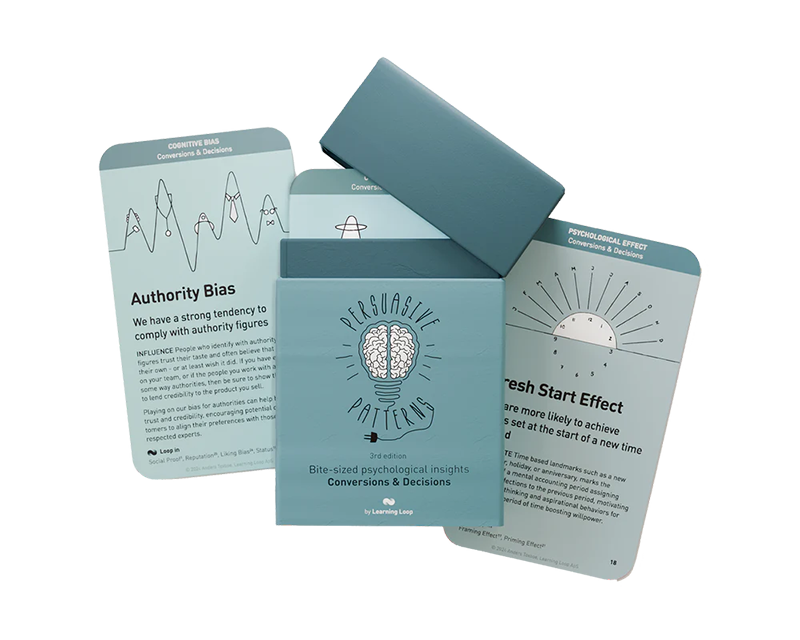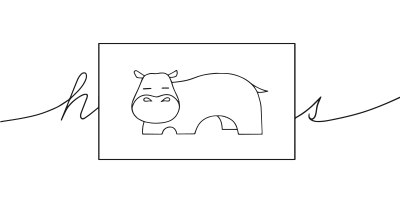
The Picture Superiority Effect is a cognitive phenomenon where people tend to remember images more effectively than words. This effect highlights the enhanced memory retention of visual information over textual content.
The Picture Superiority Effect plays a significant role in our everyday lives. Imagine you’re planning a weekend getaway to a new city. You come across two travel brochures:
- Text-heavy brochure
Filled with dense paragraphs describing historical landmarks and cultural attractions. - Image-rich brochure
Featuring vibrant photographs of the city’s vibrant streets, iconic architecture, and delicious local cuisine.
Research suggests that you’re likely to be more drawn to the image-rich brochure (Nelson et al., 1976). The captivating visuals instantly spark your imagination and provide a clearer picture of the travel experience. This is the Picture Superiority Effect in action - visuals are processed faster and leave a more lasting impression than lengthy text descriptions.
Building on the travel brochure analogy, many travel booking websites leverage the Picture Superiority Effect. Imagine searching for hotels. Websites that showcase high-quality photos of hotel rooms, amenities, and surrounding attractions are more likely to capture your attention and influence your decision compared to those relying solely on textual descriptions.
Similar to the travel brochures, captivating visuals on travel booking websites enhance user recall and create a more immersive experience, ultimately influencing user behavior and potentially increasing conversion rates (Van der Linden et al., 2009).
The study
One of the foundational studies highlighting the Picture Superiority Effect was conducted by Allan Paivio in the early 1970s. Paivio’s work demonstrated that people can remember more than twice as many images as words after viewing them for just a few seconds. His experiments involved showing participants a series of simple images and words, one at a time, and later testing their recall. The results consistently showed superior recall for images, demonstrating that visual information has a more significant impact on memory retention than verbal information. This effect, according to Paivio, is due to the dual-coding theory, where imagery forms more direct and robust connections in memory compared to words.
Paivio, A. (1971). Imagery and verbal processes. Holt, Rinehart & Winston.
Our brains process visuals faster and more efficiently than text. The Picture Superiority Effect highlights this cognitive bias and its potential to enhance communication and learning. This psychological pattern is grounded in the dual-coding theory, which posits that visual and verbal information are processed in different channels in the human mind, with imagery being more distinct and thus more memorable. Leveraging this effect can significantly enhance communication effectiveness, learning retention, marketing strategies, and user experience design.
The Picture Superiority Effect is fundamentally supported by the dual-coding theory, a principle formulated by cognitive psychologist Allan Paivio in the 1970s. This theory posits that the human brain processes and stores visual and verbal information in separate, related systems. Visual information is encoded both visually and verbally, thus providing two ways of recalling the information, whereas verbal information is less likely to be encoded visually.
- Verbal system
Processes language-based information like words and text. - Nonverbal system
Processes visual information like images and pictures.
Dual Coding Theory posits that information presented through both channels (visual and verbal) is encoded more effectively and leads to better memory recall compared to information presented solely through one channel (text).
Images activate a broader range of brain regions compared to text, leading to deeper processing and stronger memory associations. Additionally, visuals often trigger emotional responses, further enhancing retention (Eysenck & Keane, 2010).
This explains why visuals presented alongside text, or even on their own, are generally more memorable than pure textual information. The Picture Superiority Effect leverages this cognitive bias to improve communication and information retention.
The robustness of the Picture Superiority Effect can be explained by several psychological and cognitive processes:
- Dual encoding
Images are often encoded in both visual and verbal forms, which creates a stronger associative memory trace compared to words that are typically encoded using only verbal information. This dual encoding increases the likelihood of recall. - Concreteness
Visual information tends to be more concrete compared to words, which can be abstract. Concrete information is easier for the brain to process and remember because it can be directly linked to sensory experience. - Emotional engagement
Images more readily evoke emotional responses compared to words. Emotional engagement with material has been shown to enhance memory retention, as emotional stimuli activate more extensive regions of the brain, including those responsible for memory. - Attention capture
Visual stimuli are more likely to capture attention than verbal stimuli. The human visual system is tuned to quickly detect and process visual information, which enhances the initial encoding and subsequent recall of visual- compared to verbal information.
These cognitive processes explain why the Picture Superiority Effect is such a powerful tool in fields ranging from education to marketing, aiding in the design of more effective learning aids, advertisements, user interfaces, and any other medium where information retention is crucial.
Designing products with the Picture Superiority Effect
By substituting text-based menus with icons, the interface becomes less cluttered and more user-friendly, likely increasing the user’s ability to remember and use the commands more efficiently. This shift not only improves the aesthetic of the digital environment but also contributes to a smoother user experience.
Educational tools and e-learning platforms also benefit from this effect. Complex information can be broken down into schematic diagrams or visual step-by-step guides, which aid in simplifying learning materials. These visuals help students to grasp and retain complex concepts more effectively than text alone, enhancing educational outcomes.
In marketing, the Picture Superiority Effect can be leveraged to create compelling visuals that convey a brand’s message or product benefits powerfully. Such visuals evoke emotions more effectively than text, forging a stronger connection with the audience and leaving a lasting impression. Ensuring that these visuals are culturally appropriate and accessible, including the use of alt text and high-contrast color schemes, further broadens their impact, making them inclusive to all users.
Pairing visuals with concise text forms a cohesive narrative that guides the user’s journey, while personalized visual content, like product recommendations based on browsing history, can influence user decisions and boost recall.
Designers should also consider using visual and Conceptual Metaphors to explain complex concepts more naturally or to forge positive associations with their products. Selecting the right type of images is crucial; research suggests that human faces and images that feature both objects and their settings tend to be more memorable than abstract landscapes.
Ethical recommendations
The Picture Superiority Effect, while a powerful tool in enhancing memory and engagement, carries the potential for misuse if not handled responsibly. Its ability to make images more memorable than words can be exploited to manipulate emotions and decisions detrimentally. For instance, marketing campaigns may use compelling imagery to mislead consumers about the efficacy or benefits of a product, exploiting the enhanced recall of visuals to overshadow factual information that might be presented in text. Similarly, in political advertising, the use of striking visuals can be used to distort facts or amplify emotional reactions, potentially influencing public opinion and voting behavior in ways that are not based on rational or balanced arguments.
Here are some potential pitfalls:
- Deceptive visuals
Using misleading or irrelevant images to create a false impression of a product or service can erode trust and damage the user experience. - Exploiting emotions
Evoking negative emotions like fear or anxiety solely to influence user behavior is manipulative and unethical. Visuals should be used to build trust and positive associations. - Overly curated images
Excessive photo manipulation, unrealistically generated AI images, or showcasing unrealistic portrayals can create misleading expectations about product performance or user outcomes. Transparency and authenticity are crucial. - Information omission
Relying solely on visuals to convey information can exclude crucial details. Balance visuals with clear and concise text to ensure users have a comprehensive understanding of the product or service.
To ensure that the Picture Superiority Effect is used ethically and remains centered on user benefits, it is crucial to adopt the following best practices:
- Accuracy and honesty
Always ensure that visuals accurately represent the product or message they are intended to convey. Avoid using images that could mislead or misinform the user about the nature or quality of what is being offered. - Balance between visuals and text
While leveraging the power of visuals, also provide clear and detailed textual information to support and clarify the visual content. This balance helps prevent misinterpretations and allows users to make informed decisions based on a comprehensive understanding of the subject. - Cultural sensitivity
Be mindful of the cultural context and the diversity of the audience. Ensure that visuals are appropriate and respectful to all cultural groups, avoiding stereotypes or imagery that could be offensive or exclusionary. - Transparency about manipulation
If photo manipulation or staged imagery is used, disclose this information. Transparency maintains trust and credibility with the audience. - User control and consent
When using visuals in interfaces, especially those that might collect user data (like facial recognition technologies), ensure that users have control over their participation and are fully informed about how their data will be used.
Real life Picture Superiority Effect examples
IKEA
IKEA’s assembly instructions are a prime example of using visuals over text to guide behavior. The instructions are almost entirely pictorial, which simplifies the assembly process and enhances recall of the assembly steps, reducing user frustration.
BuzzFeed
BuzzFeed’s use of engaging thumbnails and GIFs for its articles and quizzes attracts more views and helps in brand recall. The compelling visuals ensure that content is not only clicked on more frequently but also remembered.
Onboarding tutorials
Step-by-step visual guides with minimal text are more user-friendly and easier to follow compared to lengthy written instructions. This is particularly helpful for users who are unfamiliar with the app’s functionalities.
Trigger Questions
- Can we replace complex text explanations with clear and concise visuals?
- Do our visuals evoke emotions that align with our brand message?
- Are we using high-quality images that accurately represent our product or service?
- Can we personalize visuals based on user data or preferences?
- Is our visual style consistent across all touchpoints?
- Have we conducted user testing to gauge the effectiveness of our visuals?
Pairings
Picture Superiority Effect + Social Proof
Incorporating images in customer testimonials adds authenticity and can significantly enhance the persuasiveness of the testimonials. For instance, before-and-after photos in weight loss programs effectively demonstrate product effectiveness and leverage social proof through visual evidence.

We remember images much better than words

We assume the actions of others in new or unfamiliar situations
Picture Superiority Effect + Social Proof + Liking Bias
Imagine an e-commerce platform showcasing high-quality product photos alongside customer reviews and user-generated content (UGC). This leverages the Picture Superiority Effect (memorable visuals) and Social Proof (positive influence of others) to build trust and encourage users to buy. Seeing real people using and enjoying the product (UGC) strengthens the positive bias created by the visuals.

We remember images much better than words

We assume the actions of others in new or unfamiliar situations
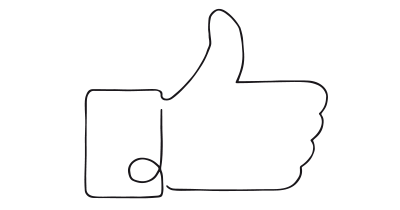
We prefer to say yes to the requests of someone we know and like
Picture Superiority Effect + Framing Effect
By using visuals that highlight the positive outcomes of a product or service, designers can frame user perceptions and decisions more effectively. For example, eco-friendly products might use imagery of nature and greenery to frame the product within an environmental context, enhancing consumer appeal.

We remember images much better than words

The way a fact is presented greatly alters our judgment and decisions
Picture Superiority Effect + Scarcity Bias + Framing Effect
A travel booking website might display stunning photos of a limited-edition vacation package with a countdown timer framed positively as an “unforgettable experience.” The captivating visuals combined with the sense of urgency and positive framing create a compelling offer that users are more likely to remember and potentially act upon.

We remember images much better than words

We value something more when it is in short supply

The way a fact is presented greatly alters our judgment and decisions
Picture Superiority Effect + Scarcity Bias + Loss Aversion
Visual cues that indicate limited availability, such as countdown timers or images of low stock, can trigger a fear of missing out. These visuals make the scarcity more tangible and immediate, compelling action more effectively than text alone.

We remember images much better than words

We value something more when it is in short supply
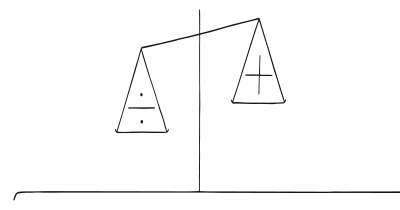
Our fear of losing motivates us more than the prospect of gaining
Picture Superiority Effect + Rewards
Visuals are integral to gamification, where badges, progress bars, and other reward-related imagery motivate continued user engagement. For instance, fitness apps show visual representations of milestones to celebrate progress, enhancing motivation through the Picture Superiority Effect.

We remember images much better than words

Use rewards to encourage continuation of wanted behavior
Picture Superiority Effect + Curiosity Effect
Using intriguing and compelling visuals can pique curiosity, encouraging deeper engagement with content. Magazines often use eye-catching cover images to invoke curiosity and prompt purchases or further reading.

We remember images much better than words

We crave more when teased with a small bit of interesting information
Picture Superiority Effect + Authority Bias + Storytelling
Imagine a healthcare platform showcasing compelling infographics and video testimonials from medical professionals. This leverages the Picture Superiority Effect (memorable visuals) and Authority Bias (trust in experts) while weaving in a narrative through storytelling (Storytelling). The visuals make the information more accessible, while the expert testimonials and narrative build trust and influence user behavior (e.g., booking appointments).

We remember images much better than words
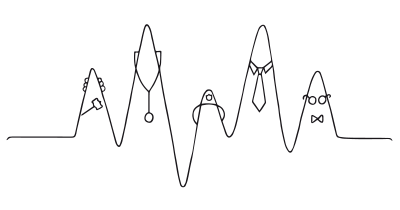
We have a strong tendency to comply with authority figures

We engage, understand, and remember narratives better than facts alone
Picture Superiority Effect + Liking Bias + Reciprocity
A social media app might personalize user feeds with visually appealing content from friends and family (Picture Superiority Effect + Liking Bias - seeing content we like). Additionally, the platform might reward users for engaging with content through features like “likes” and comments (Reciprocity). The combination encourages positive social interactions and fosters a sense of community, ultimately increasing user engagement.

We remember images much better than words

We prefer to say yes to the requests of someone we know and like
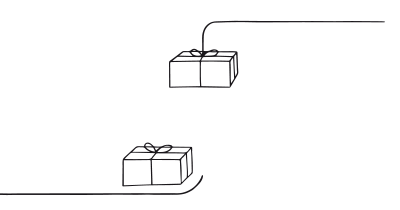
We feel obliged to give when we receive
Picture Superiority Effect + Framing Effect + Goal-Gradient Effect + Goal-Gradient Effect
A fitness app might display progress charts and before-and-after photos to showcase the positive outcomes of using the app (Framing Effect). Furthermore, the app might highlight upcoming milestones and achievements (Goal-Gradient Effect) to keep users motivated. The visuals provide a clear picture of progress (Framing Effect), while the goal markers create a sense of anticipation and encourage users to persist towards their fitness goals (Goal-Gradient Effect).

We remember images much better than words

The way a fact is presented greatly alters our judgment and decisions

Our motivation increases as we move closer to a goal

Our motivation increases as we move closer to a goal
Picture Superiority Effect + Halo Effect
The Halo Effect is where the perception of one positive characteristic (like an attractive image) influences judgments of other unrelated attributes (like quality or usability). For instance, products showcased through high-quality, aesthetically pleasing images are often perceived as higher in quality. Companies like Apple excel at this by using clean, high-resolution product images that enhance consumer perceptions of their gadgets as cutting-edge and premium.

We remember images much better than words

We let impressions created in one area influence opinions in another area
Picture Superiority Effect + Storytelling
Visual storytelling can make narratives more engaging and memorable. When combining storytelling with the Picture Superiority Effect, visuals should dynamically convey a narrative arc. For example, charities often use a series of impactful images to tell the story of how contributions change lives, making the narrative more compelling and emotionally resonant.

We remember images much better than words

We engage, understand, and remember narratives better than facts alone
Picture Superiority Effect + Anchoring Bias
This bias occurs when individuals rely too heavily on the first piece of information offered (the “anchor”) when making decisions. Visuals can serve as effective anchors, particularly in pricing strategies. Retailers might show an original high price crossed out next to a lower sale price with a striking visual of the product, emphasizing the discount and making the deal appear more valuable.

We remember images much better than words
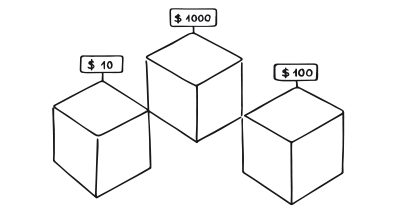
We tend to rely too heavily on the first information presented
A brainstorming tool packed with tactics from psychology that will help you increase conversions and drive decisions. presented in a manner easily referenced and used as a brainstorming tool.
Get your deck!- The picture superiority effect in associative recognition by Hockley
- Picture Superiority in Free Recall: Imagery or Dual Coding? by Paivio & Csapo
- Speak-Easy Effect
- Paivio, A. (1971). Imagery and verbal processes. Holt, Rinehart & Winston.
- Paivio, A. (1969). Interhemispheric cooperation in the mental representation of verbs and nouns. Neuropsychologia, 7(4), 305-320.
- Nelson, D. L., Reed, U. S., & Walling, J. R. (1976). Pictorial superiority effect. Journal of Experimental Psychology: Human Learning and Memory, 2(5), 523-528.
- Van der Linden, S., Hamilton, R., & Khan, N. S. (2009). Online persuasion: The role of animation in capturing and maintaining attention. Journal of Advertising Research, 49(4), 485-499.
- Shepard, R. N. (1967). Recognition memory for words, sentences, and pictures. Journal of Verbal Learning and Verbal Behavior, 6(1), 156-163.
- Eysenck, M. W., & Keane, M. T. (2010). Cognitive psychology: A student's handbook (6th ed.). Psychology Press.
- Ebbinghaus, H. (1885). Über das Gedächtnis. experimentelle Beiträge zur Psychologie des Gedächtnisses [Memory: A contribution to experimental psychology]. Leipzig: Duncker & Humblot.
- Loewenstein, G., & Prelec, D. (1993). Preferences for sequences of outcomes. Psychological Review, 100(1), 91-108.
- Hockley, W. E. (2008). The picture superiority effect in associative recognition. Memory & Cognition. 36 (7): 1351–1359
- Standing, L. (1973). Learning 10,000 pictures. Quarterly Journal of Experimental Psychology, 25, 207–222.
- Bower, G. H., & Clark, M. C. (1969). Mental imagery and associative learning. Psychological Review, 76, 592–608.
- Mandler, G., & Shebo, B. J. (1982). Subitizing: An analysis of its component processes. Journal of Experimental Psychology: General, 111, 1–22.
- Kosslyn, S. M., & Pomerantz, J. R. (1977). Imagery and verbal processes. New York: Wiley.
- Sperling, G. (1960). The information is available in brief visual presentations. Psychological Monographs, 74, 1–29.
- Biederman, I., & Shiffrar, M. M. (1987). Sexing day-old chicks: A case for functionalism. Psychological Science, 1, 65–75.
